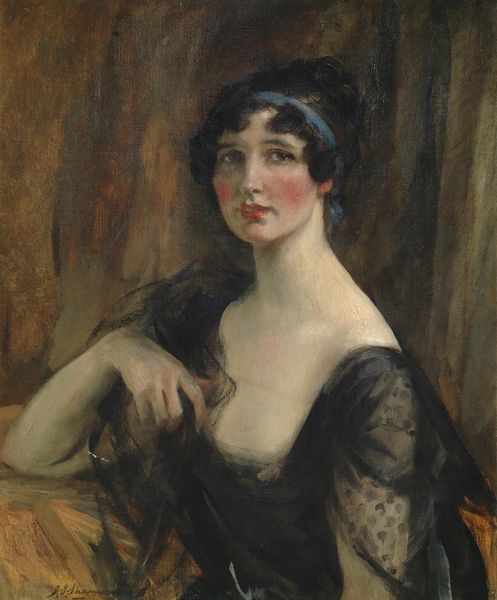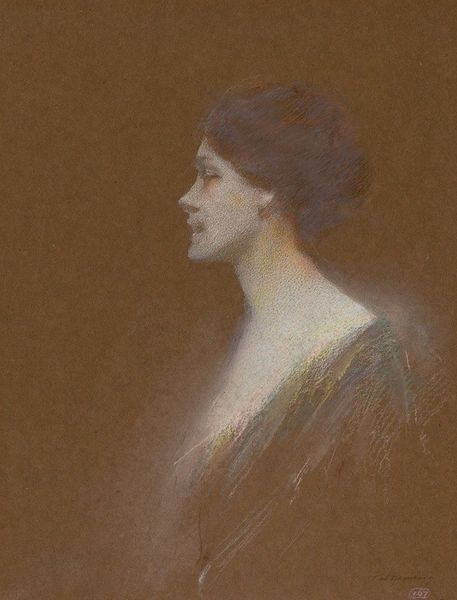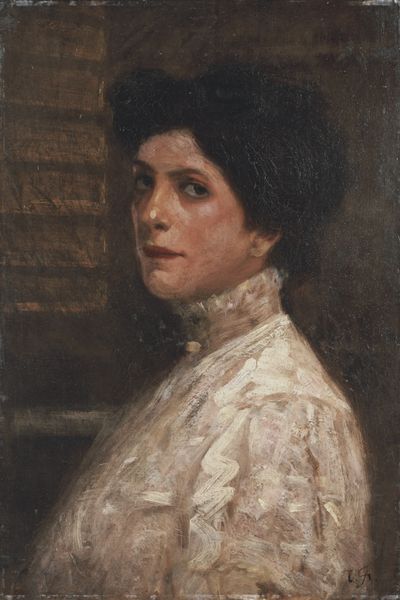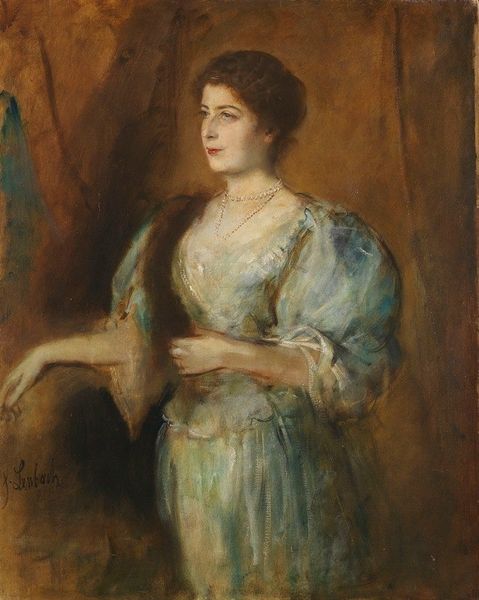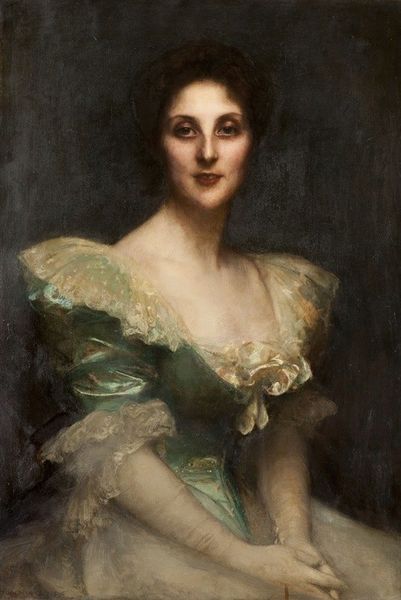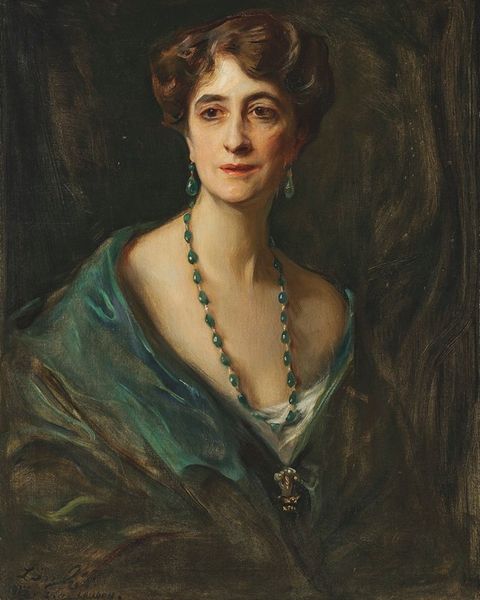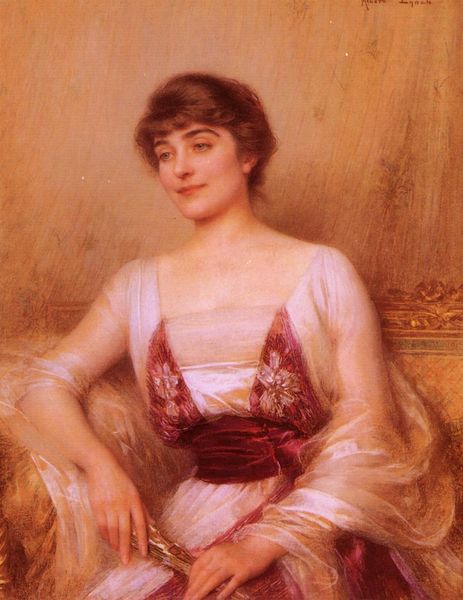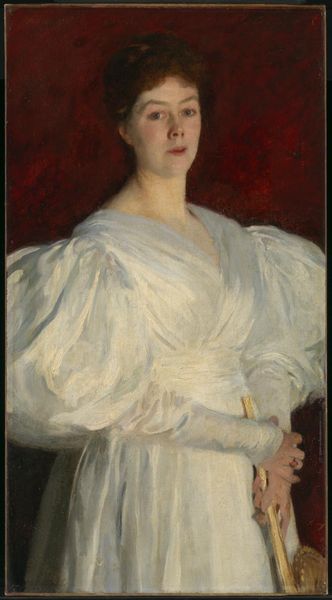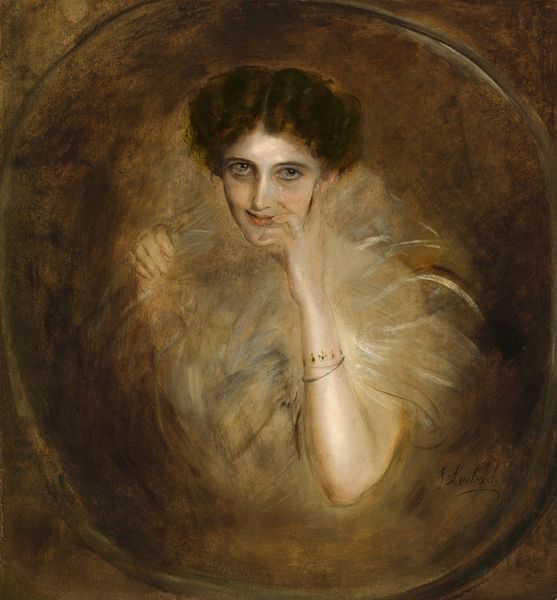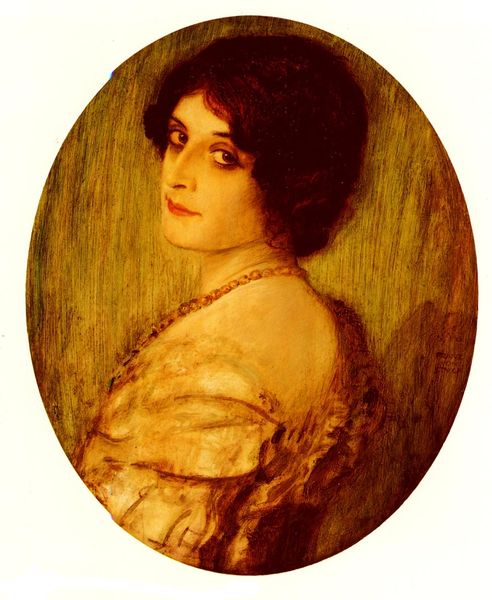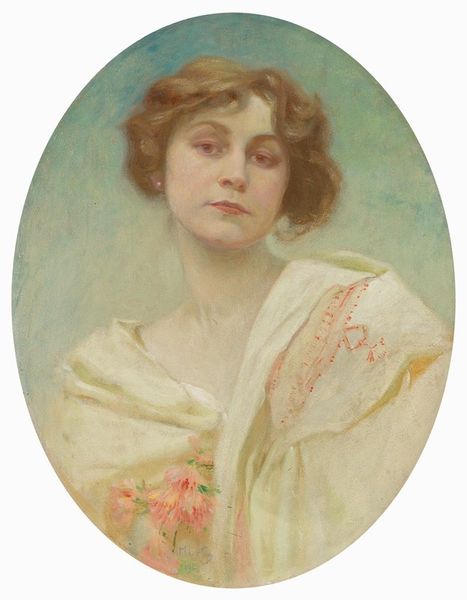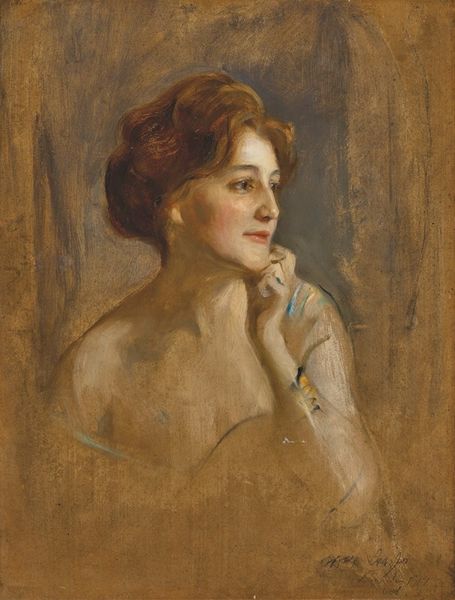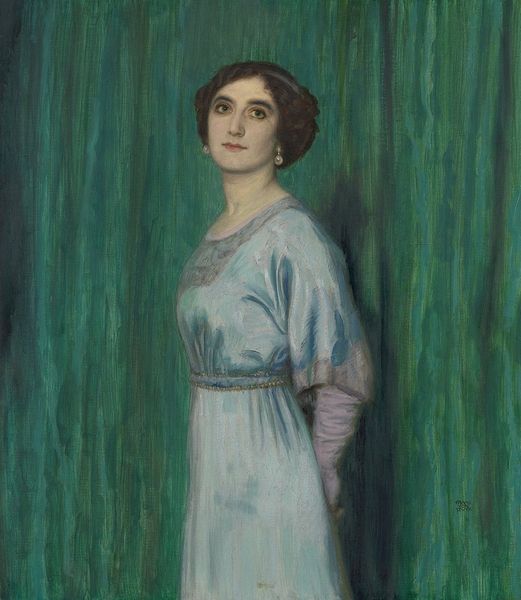
oil-paint
#
portrait
#
figurative
#
oil-paint
#
german-expressionism
#
figuration
Copyright: Public Domain: Artvee
Curator: Franz von Stuck's 1915 painting, "Mary von Stuck," presents his daughter encased within layered geometric frames. Editor: My first impression? Confined, somehow. Like gazing at someone through a meticulously crafted window that only underscores their isolation. Curator: Isolation is interesting in the context of Stuck's artistic circle. He taught Kandinsky and Klee—artists focused on abstraction as a bridge to inner emotional life. This portrait, on the other hand, renders its subject quite directly using oil paint on canvas, but contains that life within constraints. Editor: It's the visible texture of the paint that fascinates me. You can almost feel the weight of the brushstrokes. Look closely, you will perceive the labor! The blue fabric across her torso isn't just painted—it’s sculpted with layers of colour. Was this about demonstrating technical virtuosity? Curator: Precisely! Stuck engaged actively with craftsmanship as intrinsic to aesthetic impact. The visible labor refutes a kind of detachment one may expect of high art and connects it with craft production. In addition to this, consider that "Mary von Stuck" dates from the height of the First World War; this work reveals the way portraiture's role was in the making, consuming and display during the early modern moment. Editor: So the portrait functions not just as a personal depiction but as a statement on the social and historical moment? The moodiness feels connected to the context. Her face reads as if somewhere between apprehension and contemplation. I suppose it’s inescapable for me to see that as a reflection of wider social anxieties at the time. Curator: Indeed, and the materiality and its production contributes to these thematic threads. The textured paint mirrors the textures of both the physical frame and of social dynamics. The very act of creating such a deliberate, material-heavy image spoke to the turbulent era. Editor: Thinking about it now, what initially struck me as constraint feels more like… deliberate framing, an attempt to create a haven amidst chaos. To encase a precious memory with thick application of oil, perhaps even to ensure that a single person remains visible amidst immense turbulence. Curator: Yes, that reading elegantly combines the physical act of creation with its potential symbolic and social resonances. Editor: And I now leave with my initial sense transformed! It began for me as an isolating experience but closes by acknowledging its importance in an uncertain social and political world.
Comments
No comments
Be the first to comment and join the conversation on the ultimate creative platform.
